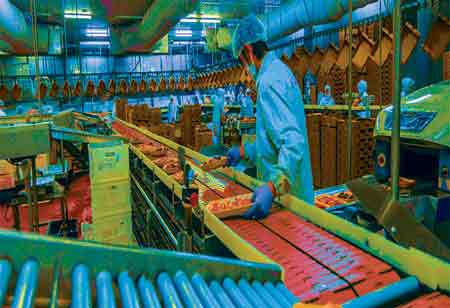Thank you for Subscribing to Food Business Review Weekly Brief
- Home
- Topics
- Alternative Proteins and Plant Based Food
- Beer and Wine
- Canned Beverages
- Coffee And Tea
- Food and Beverage Consulting
- Food and Beverage Financial Service
- Food And Beverages Marketing
- Food Distributors
- Food Ingredients
- Food Sustainability
- Plant Based Food and Beverages
- Seafood Suppliers
- Supplement Manufacturing
- Wine Investment
- News
- Vendor Viewpoint
- CXO Insights
- Conferences
- Newsletter
- CXO Awards
-
Exploring the Benefits of Data Analytics for Grocers
Cyclically using data analytics, grocery retailers gather information on the condition of goods as they show up in inventory, inventory levels as goods get sold or got back to suppliers, the kinds of customers who shop in their stores

By
Food Business Review | Wednesday, February 28, 2024
Stay ahead of the industry with exclusive feature stories on the top companies, expert insights and the latest news delivered straight to your inbox. Subscribe today.

Grocery merchants find that data analytics is a valuable tool that may improve their store's efficiency and profitability by better understanding their consumers.
Fremont, CA: Cyclically using data analytics, grocery retailers gather information on the condition of goods as they show up in inventory, inventory levels as goods get sold or got back to suppliers, the kinds of customers who shop in their stores, and prices set by rivals from both internal and external sources. Grocers use analytics and ongoing data enrichment to optimize their pricing, refunds, reorders, marketing, and promotional offers, among other aspects of their business.
Improve Employee Productivity
To determine when to move staff from low-traffic shop tasks, like refilling shelves and cleaning aisles, to higher-traffic tasks, like checking out customers, grocery store managers utilize data analytics to map their high-traffic and low-traffic hours.
Additionally, they employ analytics to enhance inventory management by pinpointing precisely where and when to send workers to replenish particular goods. This is particularly crucial for supercenters and other large-scale supermarkets.
Manage Inventory
Because there are so many perishable items in the grocery market, inventory management is one of the most challenging areas of the industry. In addition to assisting grocery stores in deciding when to remove items from the shelves, data analytics helps them guarantee adequate supplies of dairy, meat, fish, and other perishables.
By identifying the best trucking routes and distribution hubs to employ, analytics also assists grocers in lowering carrying costs. Furthermore, analytics aids supermarkets in controlling their nonfood item inventory and guaranteeing that seasonal goods (like Christmas decorations) are accessible for display at the appropriate periods.
Improve Profitability
Grocers employ data analytics to increase their profitability on both the cost and revenue sides. Analytics gives grocers insights into consumer behavior and preferences, which they may use to create more focused marketing campaigns and boost sales. Grocers may adjust their product mix by using analytics to determine which product categories are the most lucrative. From a financial standpoint, analytics may assist supermarkets in finding ways to streamline their supply chains, find more affordable suppliers, and save labor, energy, and materials costs, among other inputs.
Better Control Spoilage
Grocers may take action to prevent or decrease spoiling by using data analytics tools to develop predictive models that assist them in determining when certain foods, drinks, and other things are likely to go wrong. To reduce the likelihood of spoiling, grocers also use data analysis to pinpoint places where it is happening, such as during transportation, with a particular logistics provider, or inside a specific region of a typical shop. Grocers may alter how they store and present food goods by using analytics, which also gives them knowledge of the elements like temperature, humidity, and light that cause spoiling.






